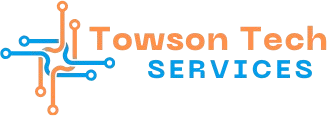IT Compliance Ensures Regulatory Conformity
Learn how to achieve IT compliance, encompassing regulatory adherence and IT audits, to safeguard your organization’s data and maintain legal compliance.
The Importance of IT Compliance
In today’s fast-paced digital environment, IT compliance is essential for robust organizational governance and risk management. It involves following internal policies, standards, and external regulations to ensure the security, integrity, and proper management of IT systems and data. By prioritizing compliance, organizations protect sensitive information, maintain legal and regulatory conformity, and shield themselves from potential fines and reputational harm.
Moreover, organizations must adhere to regulations like GDPR, HIPAA, and SOX, which enforce strict standards for data protection and privacy across various industries. Non-compliance can result in hefty financial penalties and serious legal repercussions.

Key Compliance & Regulatory Components MDR Solutions
Policy Creation:
Creating thorough IT policies is the foundation of compliance. These policies must define procedures and guidelines for data management, security protocols, access control, and incident response. Regular reviews and updates are essential to keep policies aligned with evolving regulations and emerging threats.
Continuous Monitoring and Auditing:
Ongoing monitoring of IT systems and processes is crucial for maintaining compliance. Utilizing automated monitoring tools helps identify anomalies and potential breaches in real-time. Regular internal and external audits are essential to ensure adherence to established policies and regulatory requirements.
Risk Assessment and Management:
Identifying and evaluating risks associated with IT systems and data is essential. An effective risk management approach includes regular risk assessments, vulnerability scanning, and penetration testing. This process helps uncover potential security gaps and ensures the implementation of appropriate controls to minimize risks.
Effective Incident Response:
A well-structured incident response plan is essential for quickly handling compliance-related incidents. This plan should outline steps for detecting, reporting, and resolving incidents, ensuring minimal disruption to the organization and protecting stakeholders effectively.
Training and Awareness:
Educating employees about compliance requirements and best practices is essential. Regular training sessions, workshops, and awareness programs can help ensure that all staff members understand their roles and responsibilities in maintaining a compliant environment.
Understanding Regulatory Compliance

HIPAA
The Health Insurance Portability and Accountability Act (HIPAA) protects sensitive patient health information from unauthorized disclosure. It sets national standards for the security of electronic health records and mandates strict safeguards. Compliance involves regular risk assessments, employee training, and implementing robust security measures.

DFARS
The Defense Federal Acquisition Regulation Supplement (DFARS) provides additional procurement regulations for DoD contracts, focusing on safeguarding sensitive information. DFARS mandates contractors to implement cybersecurity measures, particularly the protection of Controlled Unclassified Information (CUI), in line with NIST SP 800-171 standards.

CMMC
The Cybersecurity Maturity Model Certification (CMMC) is a DoD framework aimed at enhancing cybersecurity across the Defense Industrial Base (DIB). It consists of five levels of security practices and processes to protect Controlled Unclassified Information (CUI). Contractors must achieve the required certification level to bid on DoD contracts.

ITAR
The International Traffic in Arms Regulations (ITAR) control the export and import of defense-related articles, services, and technology to safeguard US national security. Administered by the Department of State, ITAR requires proper authorization and stringent security measures. Non-compliance can lead to severe penalties, including fines and export privilege loss.

NYS DFS
The New York State Department of Financial Services (NYS DFS) Cybersecurity Regulation mandates robust security measures for financial institutions operating in New York. It requires the implementation of a comprehensive cybersecurity program, including risk assessments and incident response plans. Institutions must appoint a CISO and regularly report to the NYS DFS.

PCI-DSS
The Payment Card Industry Data Security Standard (PCI-DSS) ensures the safe handling of credit card information by merchants and service providers. It outlines specific requirements for data protection, including encryption and access control. Organizations that process, store, or transmit credit card data must adhere to these standards to prevent data breaches and fraud.

SOX
The Sarbanes-Oxley Act (SOX) was enacted to protect investors by improving the accuracy and reliability of corporate disclosures. It requires stringent internal controls and corporate governance practices, including financial statement certification by CEOs and CFOs. Compliance helps ensure transparency and accountability in corporate financial practices.

SAFEGUARDS RULE
The Safeguards Rule, part of the Gramm-Leach-Bliley Act (GLBA), mandates financial institutions to develop and maintain a comprehensive information security program. It requires risk assessments, security controls, and continuous monitoring to protect customer information. Compliance helps prevent data breaches and ensures the confidentiality of customer data.
All of TowsonTech's IT compliance programs help you achieve the following:
- Make cost-effective improvements to security posture with quick turn-around.
- Look into your respective industry’s requirements and see what you need to do to meet them.
- Understand what it takes to protect sensitive, non-public data from external and internal threats.
- Improve your security posture by reducing your attack surface and overall risk.
- Save costs by freeing up existing resources and reducing the need for new staff.

